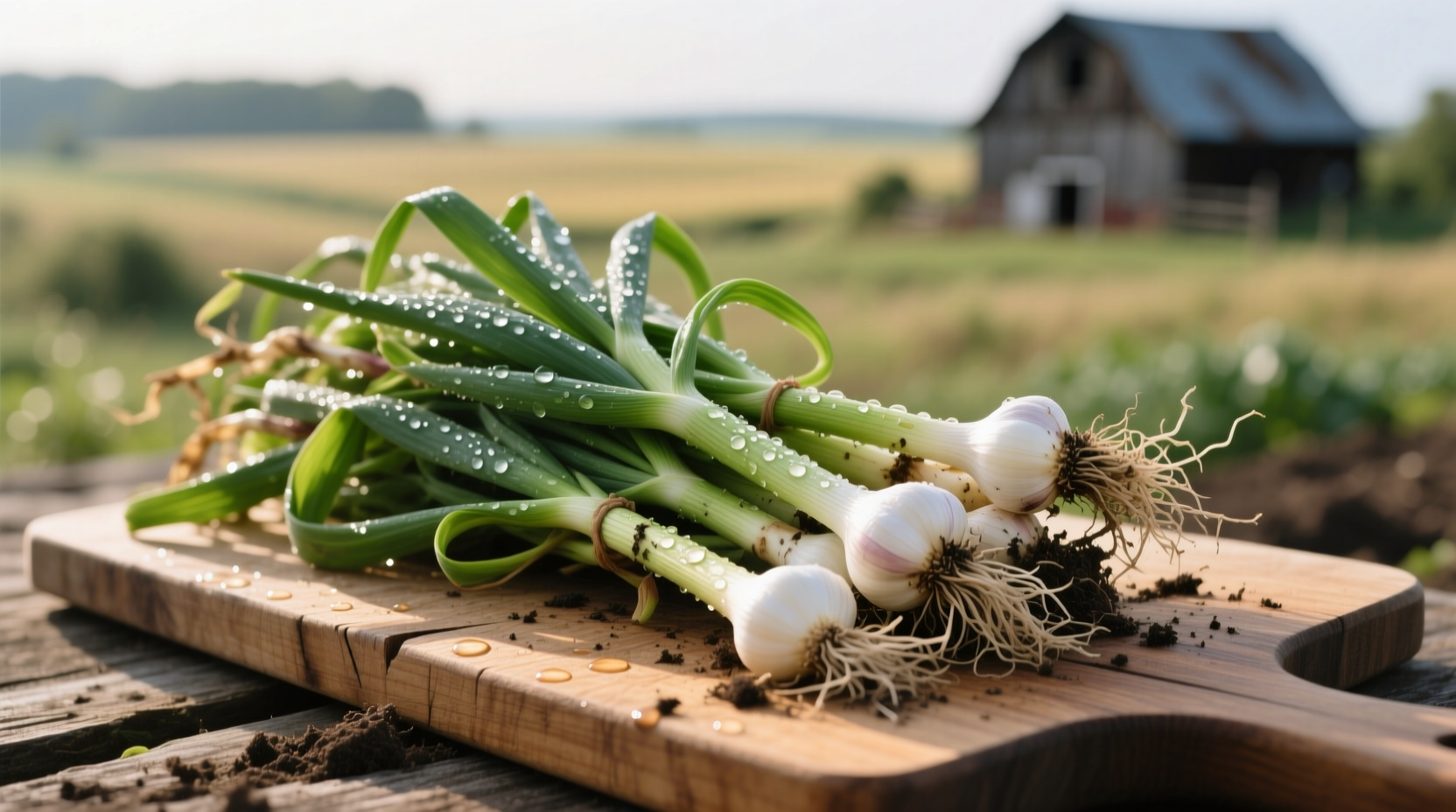What Exactly Are Garlic Stalks?
Garlic stalks (Allium sativum var. ophioscorodon) emerge from hardneck garlic plants as slender, curling green stems that eventually produce flower heads. These stalks, often mistakenly called garlic scapes (which is actually the correct term), represent the plant's reproductive pathway. Unlike softneck garlic varieties that don't produce these stalks, hardneck types like Rocambole, Porcelain, and Purple Stripe naturally develop them.
According to agricultural research from Cornell University's College of Agriculture and Life Sciences, garlic stalks begin forming when daylight reaches 10-12 hours, typically in late May through June in the Northern Hemisphere. Harvesting them at the right stage—when they've made one to two full curls but before straightening—is crucial for optimal tenderness and flavor.

Garlic Stalks vs. Garlic Bulbs: Key Differences
| Characteristic | Garlic Stalks | Garlic Bulbs |
|---|---|---|
| Flavor Profile | Mild, fresh garlic with subtle grassy notes | Strong, pungent, spicy when raw |
| Texture | Tender when young, becomes fibrous if mature | Firm, becomes soft when cooked |
| Seasonality | Late spring to early summer (seasonal) | Available year-round |
| Nutritional Highlights | Rich in vitamin C, antioxidants | Allicin compounds, manganese, vitamin B6 |
| Best Cooking Methods | Quick sautéing, blending in pesto, pickling | Roasting, mincing for sauces, slow cooking |
When Garlic Stalks Shine: Culinary Applications
Understanding garlic stalk seasonality is essential—they're only available for about 4-6 weeks annually, typically May through June in most temperate climates. This limited window makes them a prized seasonal ingredient among chefs. The USDA Agricultural Marketing Service notes that garlic stalks represent less than 5% of total garlic production, explaining their relative scarcity in mainstream markets.
Immediate-Use Techniques
For quick weeknight meals, chop garlic stalks into 1-inch pieces and sauté them in olive oil as a base for pasta dishes or stir-fries. Their milder flavor means you can use them more generously than cloves—up to 1 cup of chopped stalks equals about 3-4 cloves of garlic in intensity. Professional chefs often replace half the regular garlic in recipes with stalks to create layered garlic flavor without overwhelming heat.
Preservation Methods
When faced with a bounty of garlic stalks, preservation extends their usability. The National Center for Home Food Preservation recommends these methods:
- Freezing: Chop stalks, spread on baking sheet, freeze solid, then transfer to airtight containers (keeps 6-8 months)
- Pesto: Blend with olive oil, nuts, and herbs (keeps 3-4 months frozen)
- Pickling: Quick-pickle in vinegar brine for refrigerator pickles (keeps 2-3 months)
Flavor Pairings That Elevate Garlic Stalks
Garlic stalks' delicate flavor shines when paired thoughtfully. Their grassy notes complement spring vegetables like asparagus, peas, and fava beans exceptionally well. For protein pairings, they work beautifully with:
- Fish and seafood (particularly salmon and shrimp)
- Chicken and turkey
- Goat cheese and feta
- Eggs in omelets or frittatas
Avoid pairing garlic stalks with strongly flavored ingredients like blue cheese or smoked meats, which will overpower their subtle essence. The flavor chemistry research published in the Journal of Agricultural and Food Chemistry explains that garlic stalks contain different sulfur compounds than mature cloves, resulting in their distinctive milder profile.
Storage and Selection Guide
When selecting garlic stalks at farmers markets or specialty grocers, look for:
- Bright green color without yellowing
- Firm, crisp texture (avoid limp or rubbery stalks)
- Curled shape with one to two full spirals
- No signs of flowering (bulbets at the tip indicate over-maturity)
For optimal storage, treat garlic stalks like asparagus—trim the ends and stand them upright in a glass with 1-2 inches of water, covered loosely with a plastic bag in the refrigerator. This method, recommended by the University of California Cooperative Extension, keeps them fresh for 7-10 days. Alternatively, wrap them in a slightly damp paper towel and store in a produce bag with ventilation holes.
Common Mistakes to Avoid
Even experienced cooks make these garlic stalk errors:
- Overcooking: They become mushy in just 3-5 minutes of sautéing
- Using the tough end: The bottom 1-2 inches are often too fibrous to eat
- Confusing with garlic greens: True garlic greens are the flat leaves, not the curly stalks
- Storing like regular garlic: They require refrigeration, unlike bulbs
Simple Starter Recipe: Garlic Stalk Pesto
This beginner-friendly recipe showcases garlic stalks' versatility while preserving their delicate flavor:
- Blanch 1 cup chopped garlic stalks in boiling water for 30 seconds, then shock in ice water
- Combine with 1/2 cup toasted walnuts, 1/2 cup grated Parmesan, and 1/2 cup olive oil
- Process until smooth, adding lemon juice to taste
- Toss with 8 oz pasta and fresh cherry tomatoes
This preparation method, adapted from techniques used in Northern Italian cuisine where garlic stalks are traditional, preserves their fresh flavor while mellowing any potential bitterness. The blanching step is crucial—it enhances their vibrant green color while maintaining texture.











 浙公网安备
33010002000092号
浙公网安备
33010002000092号 浙B2-20120091-4
浙B2-20120091-4